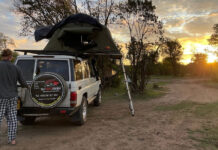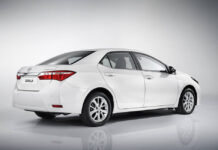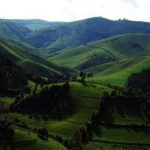Entering national parks in East Africa with a self-drive vehicle offers travelers the freedom to explore stunning landscapes and observe diverse wildlife at their own pace. This adventure requires a clear understanding of the specific entry procedures for each park, which can vary by country and location.
From obtaining necessary permits and paying fees to ensuring that vehicles are adequately equipped for the challenging terrain, a well-planned approach is essential for a safe and enjoyable East Africa self drive experience. Whether it’s the iconic savannas of the Serengeti or the lush forests of Bwindi, self-driving in these parks allows for unique and personal encounters with the natural beauty of East Africa.
- Understanding the Rules for Self-Drive in East Africa
In most East African countries, self-driving in national parks is allowed, but each park has its own specific entry rules, vehicle requirements, and fees. It’s important to know the requirements for each park before your trip, as the process can vary. Major destinations like Kenya, Tanzania, Uganda, and Rwanda have some similarities but also differences in their entry procedures.
- Requirements for Self-Drive in East African National Parks
Before entering any national park, ensure you meet these basic requirements:
- Valid Entry Permit: Every national park in East Africa requires an entry permit, often obtained at the park gate or booked in advance. For popular parks, pre-booking is highly recommended.
- Vehicle Permit: In addition to individual entry fees, many parks charge a fee for vehicles. Larger vehicles, especially Land Cruisers and Land Rovers, may attract higher fees.
- Driving License: Make sure you carry a valid driver’s license. An international driving permit is ideal if you’re a foreign visitor.
- Insurance Documents: Confirm that your rental vehicle has the required insurance, including coverage for third-party liability.
- Valid Passport/Visa: For cross-border travel, ensure you have the necessary visas, especially if you’re moving between countries in the East African Community.
- Entry and Vehicle Fees in Key East African Countries
Here’s a breakdown of the approximate fees for some popular parks in East Africa. Note that these fees can vary based on nationality (local, regional, or international), vehicle size, and sometimes the season.
Kenya
- Park Entry Fees: For international tourists, the fees for popular parks range between $60 and $80 per person per day.
- Vehicle Fees: Generally, between $30-$40 for foreign-registered vehicles. Some parks may charge slightly less for locally registered vehicles.
- Notable Parks: Masai Mara, Amboseli, Tsavo, and Lake Nakuru.
Tip: The Kenya Wildlife Service (KWS) allows online booking for most parks. Some parks, like Masai Mara, don’t permit self-drive vehicles, so you must hire a local guide or arrange for a park-approved safari vehicle at the gate.
Tanzania
- Park Entry Fees: Foreign visitors pay between $35 and $70 per person per day for major parks like Serengeti and Ngorongoro.
- Vehicle Fees: Vehicle fees for foreign-registered cars are around $40, while local vehicles may pay about $10 to $20.
- Notable Parks: Serengeti, Ngorongoro Crater, Tarangire, and Mikumi.
Tip: For Ngorongoro, a special permit is required for crater access, which can be costly. Booking ahead for the Ngorongoro Crater can save time and avoid potential delays.
Uganda
- Park Entry Fees: Foreigners pay around $40 per person per day, with discounts for East African Community residents.
- Vehicle Fees: Typically, $10 to $20 for locally registered vehicles, with foreign vehicles paying around $30.
- Notable Parks: Queen Elizabeth, Murchison Falls, Bwindi Impenetrable, and Kidepo Valley.
Tip: Uganda Wildlife Authority (UWA) manages most of the parks, and booking through a licensed tour operator is often recommended, especially for activities like gorilla trekking that require permits in advance.
Rwanda
- Park Entry Fees: General Park entry is around $20, but specific activities (like gorilla trekking in Volcanoes National Park) have separate permits costing $1,500.
- Vehicle Fees: Typically, $20 to $30 for foreign-registered vehicles.
- Notable Parks: Volcanoes, Akagera, and Nyungwe Forest.
Tip: Akagera National Park is Rwanda’s main option for self-driving safaris. It’s recommended to enter with a GPS, as roads are mostly unpaved.
- Planning Your Route and Road Conditions
Most national parks have rough roads, and a 4×4 vehicle is essential in many areas, especially during the rainy seasons. Here are some specifics for each country:
- Kenya and Tanzania: Roads can become muddy and impassable during rains, so ensure your vehicle has high clearance and off-road tires. Check weather forecasts and road conditions before setting out, and consider using Google Maps or Maps.me for navigation.
- Uganda: Most roads to the major parks are well-marked but can be challenging in remote areas. A 4×4 is essential, and be prepared for limited fuel stations outside major towns.
- Rwanda: Rwanda’s Akagera National Park has a good network of gravel roads but can still become slippery during rain.
For border crossings, expect some waiting time for customs checks and paperwork processing.
- Park Rules and Regulations
Every park has rules to protect the environment and ensure visitor safety. Key rules include:
- Speed Limits: Usually capped at 40 km/h to avoid disturbing animals or damaging the terrain.
- Stay on Designated Roads: Off-roading is generally prohibited to protect delicate habitats.
- Avoid Littering: Dispose of trash properly, or carry it out with you.
- Do Not Feed Animals: Feeding wildlife can disrupt their natural behaviour and diet.
- Minimum Distance from Wildlife: Keep a respectful distance from animals, especially larger ones like elephants, lions, and rhinos.
- Park Gate Hours: Most parks open between 6 AM and 7 PM, with entry and exit not allowed outside these hours.
- Practical Tips for Self-Drive Safaris
- Pack Essentials: Bring plenty of water, snacks, a first-aid kit, maps or GPS, binoculars, and a camera.
- Refuel Regularly: Fill up your tank whenever possible, as fuel stations are scarce near many parks.
- Carry Cash: Some parks accept credit cards, but it’s wise to carry cash in case electronic payments aren’t available.
- Communicate Plans: Share your travel plans with someone outside the park, especially if visiting remote areas.
- Have an Emergency Contact: In case of a breakdown or emergency, it’s good to have contacts for both park rangers and your rental company.
- Safety Tips and Wildlife Encounters
- Maintain Distance: If you come across wildlife on the road, stay calm, give them space, and avoid sudden movements.
- Stay in Your Vehicle: Do not exit your vehicle unless at designated areas, as some animals can approach vehicles.
- Be Cautious at Watering Holes: Animals frequent water sources, so approach these areas slowly, as animals can appear suddenly.
- Watch Out for Monkeys and Baboons: They can be aggressive, so avoid feeding them or leaving food in open sight.
- Emergency Support and Contacts
In case of any emergencies, each park has ranger posts where help can be sought. Additionally:
- Park Rangers: They patrol the parks and can offer assistance or guidance if needed.
- Rental Companies: Most car rental companies in East Africa offer limited support within parks, so check with them about their emergency support options.
Conclusion
With the right preparation, a self-drive safari can be one of the most rewarding ways to explore East Africa’s national parks. By following park rules, preparing your vehicle, and knowing what to expect, you can have a safe and memorable adventure across East Africa’s stunning landscapes and diverse wildlife.













